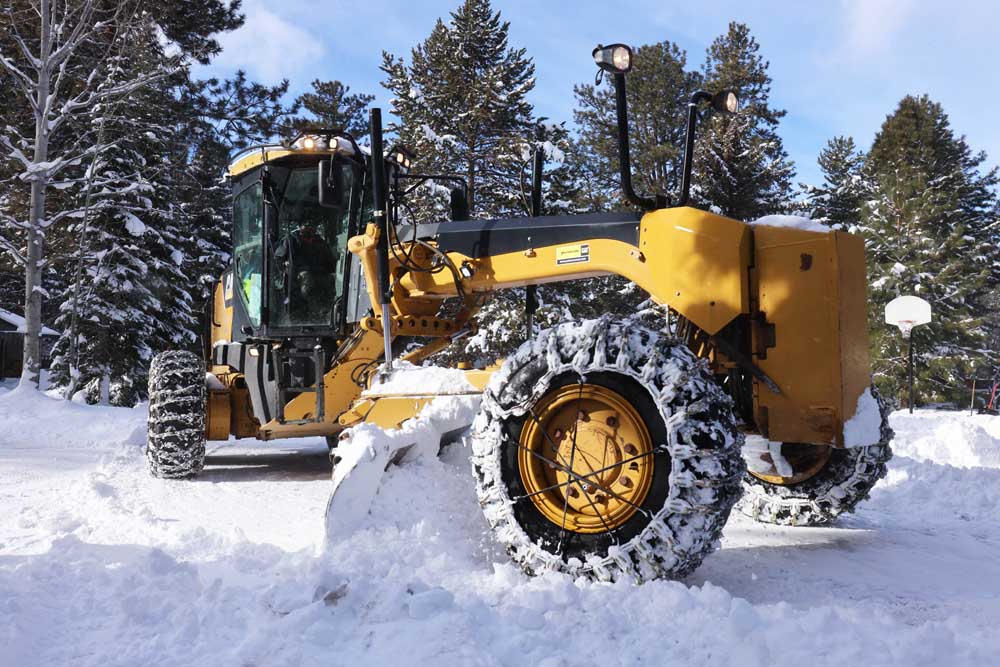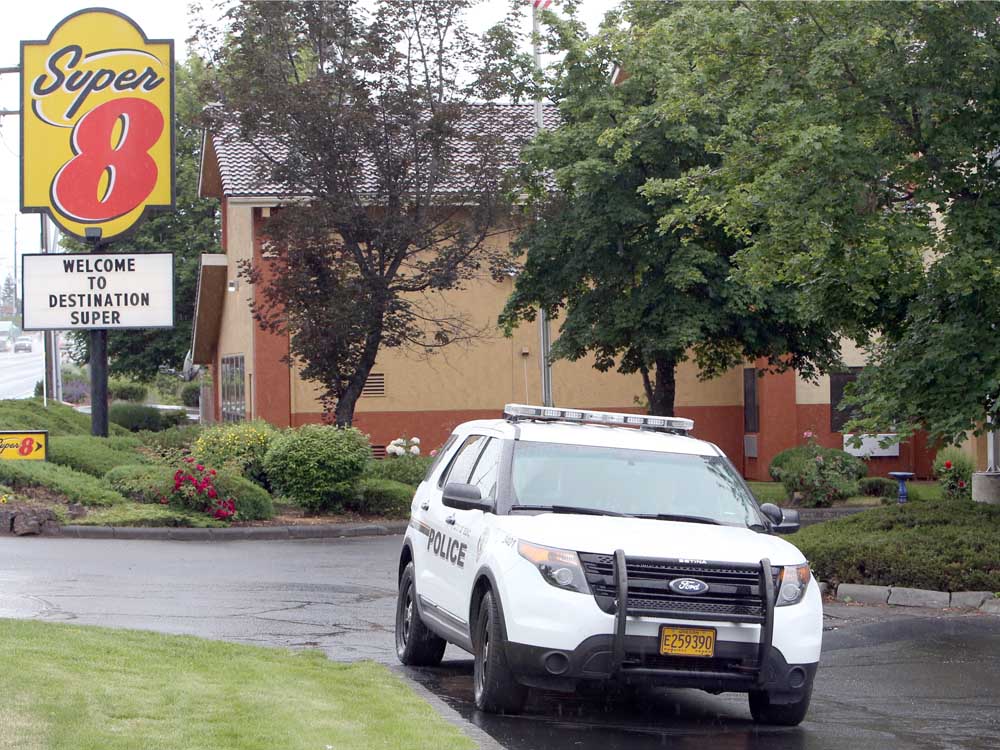It’s not all fluff and games: Your plowing questions answered
Published 5:45 am Friday, January 12, 2024

- A grader is used to plow a residential street in Bend on Jan. 11, 2024.
Recent snowfall blanketed Bend with 6 inches of fresh powder. But the magic of a winter wonderland can quickly disappear the second most people have to drive somewhere.
If you are new to Bend, or have never lived in a snowy climate before, the logistics of plowing and winter road maintenance can be difficult to sort out. Below are answers to the most commonly asked questions about plowing and road maintenance after a winter storm.
What roads get plowed first?
The city of Bend, Deschutes County and the Oregon Department of Transportation prioritize plowing based on safety and traffic volume.
The city has three priority levels. Some of the highest-priority streets within the city include Third Street, 27th Street, Century Drive, Neff Road and Reed Market Road.
The next priority level includes streets that provide access to the high-volume roads, along with routes to medical facilities, schools and major employment centers.
The lowest priority level is residential streets, which are plowed once the higher priority roads are cleared.
Similarly, the county has different levels of plowing priority.
When snow impacts roads across Deschutes County, plow operators prioritize the Tumalo area to state Highway 126, the Sisters area, northwest and southwest Redmond areas, the northeast Bend area, areas south of Bend city limits and areas around La Pine. Lower priority roads include local roads and dead-end roads.
Coming soon: Track snowplows as they plow Bend streets
Who is responsible for plowing?
The county is responsible for several main roads in Bend and thoroughfares that extend outside city limits. Unincorporated residential areas outside city limits are county-managed. Below is a list divided by area.
• West of Bend city limits: Skyliners Road, Johnson Market Road and OB Riley Road
• Northeast Bend: Powell Butte Highway and Deschutes Market Road
• East of Bend: Alfalfa Market Road
• Southeast Bend: Arnold Market Road and Rickard Road
• South of Bend city limits: Knott Road and Baker Road
All other roads, except state highways plowed by ODOT, are the responsibility of the Bend Department of Transportation & Mobility.
What about emergency services?
Access roads to emergency services, hospitals, police departments and fire departments are all prioritized for plowing ahead of residential areas. If an emergency occurs within city limits and first responders cannot access the area due to snow, the nearest snowplow is sent to assist.
If emergency vehicles must access county-managed roads, the Deschutes County Sheriff’s Office will notify 911 of the adverse road conditions.
Why are residential roads plowed last?
It may seem harsh, but the road to your house is not a priority.
The county and the city have limited resources and must prioritize areas of highest impact in the name of efficiency.
During a big snowstorm, the city will hire private snowplow operators to clear residential streets while city snowplow crews prioritize higher-volume thoroughfares. However, the decision to call in private contractors depends on the storm’s severity and if more snow is in the forecast.
When do plows get deployed?
Each public service department has its threshold for when plows are deployed. The city will deploy plows to its top two priority roads once snow accumulation reaches 2 inches. The threshold for residential areas is 6 inches.
The county will deploy plows when the snow is 4 inches deep, and ODOT will deploy based on severity and availability of resources.
Coming soon: Track snowplows as they plow Bend streets
Why do plows push a berm of snow into my driveway?
Plows work by angling a blade in front of the plow to the right to direct snow away from the middle of the road. By design, snow from the street gets deposited along driveways, sidewalks and areas directly next to the road.
Once the snow is on private property, it is the owner or caretaker’s responsibility to clear it. With more than 40,000 driveways within city limits, it would take over three weeks of continuous work — spending only one minute per residence — to clear driveways alone.
The county applies the same logic to its operations, which cover more than 900 miles of road to plow. However, those who border roads the county is responsible for can apply for a medical exemption to have plow operators eliminate the berm from their driveways.
Central Oregon roads will look different this winter after ODOT reduces services
Who is responsible for clearing city sidewalks?
According to Bend municipal codes, residents who live next to sidewalks have 24 hours after the snow has stopped to clear them. In commercial areas, the time limit is six hours. The same rule applies to covering ice with materials to ensure safety.
It is a Class B civil infraction, punishable by a maximum penalty of $400, for violating this rule in
commercial areas and a Class C civil infraction, punishable by a maximum penalty of $200, for residential areas.
Why are there rocks on the road?
When roads are icy or compacted by snow, tires have less traction. One thing that helps with that problem is applying gravel or cinders — red, porous volcanic pebbles — to the road. Some private businesses or homeowners will also use salt to help de-ice driveways and sidewalks, but this is known to degrade concrete surfaces.
The city of Bend uses gravel, while the county and ODOT use cinders to add traction to the roads. Some agencies, like Bend Transportation & Mobility, prefer gravel because it is reusable, while cinders get swept to the side of the road. While traveling lesser maintained highways, sometimes divers can see cinders along the shoulder of the road.
All information in this article is available to the public on city, county and ODOT websites.
Editor’s note: This article has been corrected. The original version misstated the plowing priorities for Deschutes County. The Bulletin regrets the error.







